Inspired by conversations on the FOOD52 Hotline, we're sharing tips and tricks that make navigating all of our kitchens easier and more fun. Today, we're talking about oils.
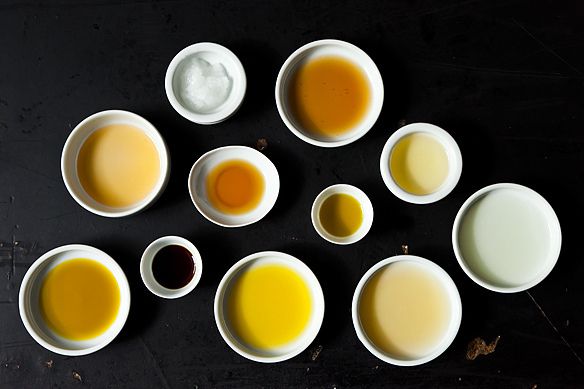
Where would we be as cooks, without oil?
It makes a smooth aioli of a lonely egg yolk sitting at the bottom of a mixing bowl. It imparts integrity and crunch to a flimsy curl of potato. It creates a crisp, golden husk on the outside of a doughnut. It lends to cake a soft crumb whose moisture will not surrender after one day. Drops of it, like tiny suspended jewels, give soups a finishing flourish of silky, rich flavor.
Home cooks are constantly coming up with inventive ways to cook with oil -- using it to flavor desserts, add crunch to granola, and even to create powders. So go forth and experiment, but before you do, get to know your oils:

Olive oil
Flavor: Neutral to grassy, fragrant, and lightly bitter.
What's in a name: Virgin olive oil is extracted only by physical means and has no more than 1.5% acidity. Extra-virgin olive oil (the highest quality olive oil) has less than 0.8% acidity. Refined olive oil is pressed oil that has been chemically treated to neutralize any strong flavors or acidity.
Smoke point: Unrefined oils: 375 degrees (and they're packed with flavors that don't hold up well under heat). Lighter olive oils: 468 degrees.
Best uses: Virgin oils are ideal for dips, dressings, and finishing dishes. With lighter olive oils, sizzle away: sear vegetables and meats, even fry artichokes.
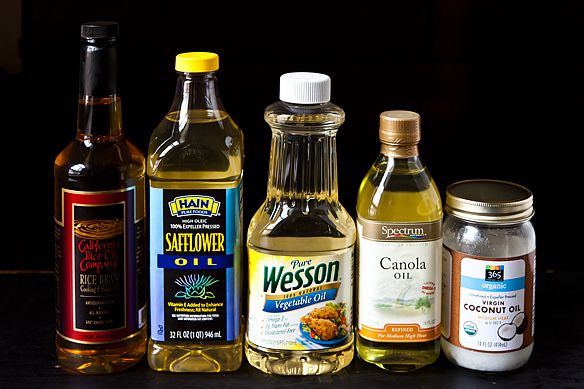
Vegetable Oil
What's in a name: Vegetable oil is a blanket term for all oils derived from plants, most commercial oils labeled as vegetable come from soybeans. These oils are generally chemically refined to remove flavors, color, and elements that might burn easily.
Flavor: This oil is (and should always be) flavorless
Smoke point: High (up to 460 degrees)
Best uses: Vegetable oil is great for baking and deep-frying.
Vegetable Oil Alternatives
Prime examples: Safflower, canola, and grapeseed oil
Flavor: All are relatively flavorless
Smoke point: High (safflower: 510 degrees; canola: 400 degrees; grapeseed: 421 degress)
Best uses: These can be used in any recipe that calls for vegetable oil.
Where do you come from: Safflower oil comes from the seeds of safflowers; canola oil comes from the rapeseed plant, and you can probably guess where grapeseed oil comes from.
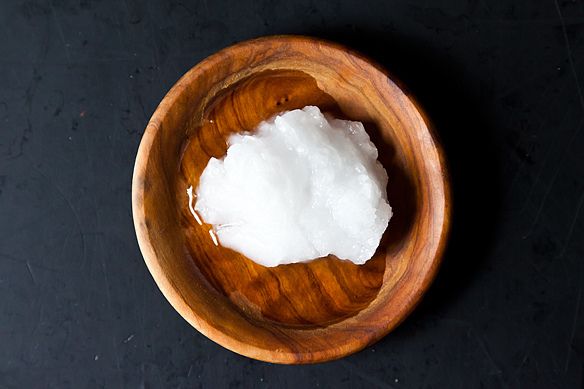
Coconut Oil
Health nut: Coconut oil is sought after for its beneficial fatty acids, which have gained it a soaring reputation in health food circles.
Flavor: Soft, sweet, nutty and tropical
Smoke point: Medium (280 degrees)
Best uses: This versatile oil can be used for making savory foods and baked goods alike. It's a great vegan substitute for butter.
Bonus tip: Melissa Clark recommends using coconut oil to make popcorn because "The oil brings out the nutty sweetness of the corn itself while adding a rich creamy sensation, without having to pour melted butter on the top."
Rice Bran Oil
Now trending: Rice bran oil is becoming increasingly popular for its health benefits -- it's rich in vitamins and antioxidants and is even claimed to improve cholesterol.
Flavor: Mild
Smoke point: High (490 degrees)
Best uses: This is a fine stand-in for vegetable or canola oil.
Money talks: Rice bran oil is typically a little more expensive than your average vegetable oil, but the reward is a healthier fried food and, according to Cook's Illustrated, a far superior taste.
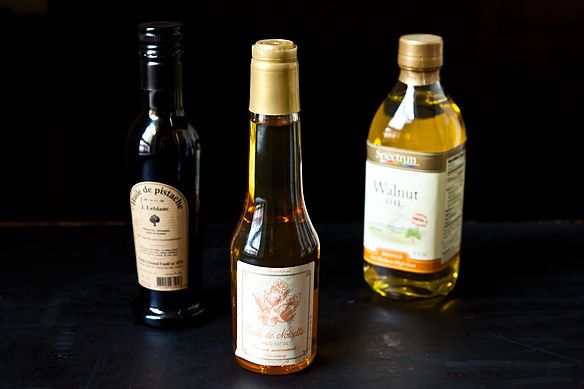
Nut Oils
Prime examples: Walnut, pistachio, and hazelnut oil
Flavor: Earthy and rich (the oils often have hints of the nuts they come from)
Smoke point: Low
Best uses: Since their flavors thrive at lower temperatures, use nut oils to dress salads and finish dishes.
Smart Storage: It's best to store these in the refrigerator, to prevent them from going rancid.
May we suggest: Give walnut oil a try in this red leaf salad with roasted beets, oranges, and walnuts, drizzle a little pistachio oil on Patricia Wells' Zucchini Carpaccio, and whip up a batch of radish leaf hazelnut pesto with some hazelnut oil.
Peanut Oil
Not like other nuts: Peanut oil distinguishes itself from other nut oils with a much higher smoke point and a much softer flavor. It has many of the same physical characteristics of vegetable oil.
Flavor: Faintly peanut-y
Smoke point: High (437 degrees)
Best uses: This is a great choice for frying and stir-frying.
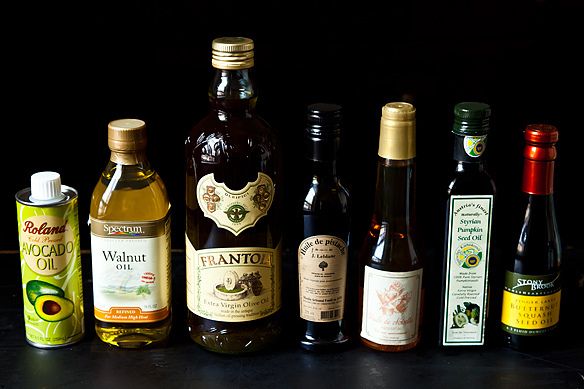
Avocado Oil
Flavor: Mildly nutty
Smoke point: Extremely high (520 degrees)
Best uses: Avocado oil is a great oil for health-conscious frying and sautéing.
Compositionally speaking: Avocado oil is similar in composition to olive oil and offers many of the same health benefits. It is full of vitamin E and monosaturated fats, which are good for the heart.
Sesame Oil
Flavor: Deep and savory
Smoke point: Refined sesame oil has a smoke point of 450 degrees.
Best uses: Use refined sesame oil for frying, and stick to the unrefined variety for a flavorful finishing oil.
Try this: Give sesame oil a try in cheese1227's Hot Smoked Salmon, Soba and Asian Greens Salad.
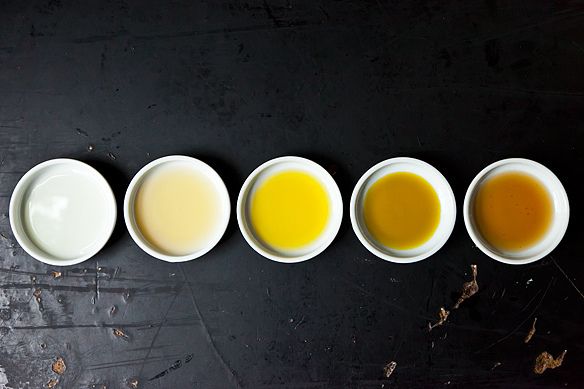
Linseed oil
Alias: Flaxseed oil
Flavor: Slightly earthy
Smoke point: Low
Best uses: Salad dressings, and other room-temperature applications
Heads up: Be sure to buy food-grade linseed oil rather than paint-grade, and keep this one in the refrigerator, since it tends to turn rancid quickly.
Squash seed oils
Prime examples: Pumpkin seed oil and butternut squash seed oil
Flavor: Warm, buttery (like roasted squash)
Smoke point: Low
Best uses: As a finishing oil -- sprinkle sparingly over soups, mashed potatoes, and fish
Bonus: They add a fantastically vibrant finishing touch of color too
What are your favorite oils to use in the kitchen, and how do you cook with them? Weigh in with a comment!








See what other Food52 readers are saying.